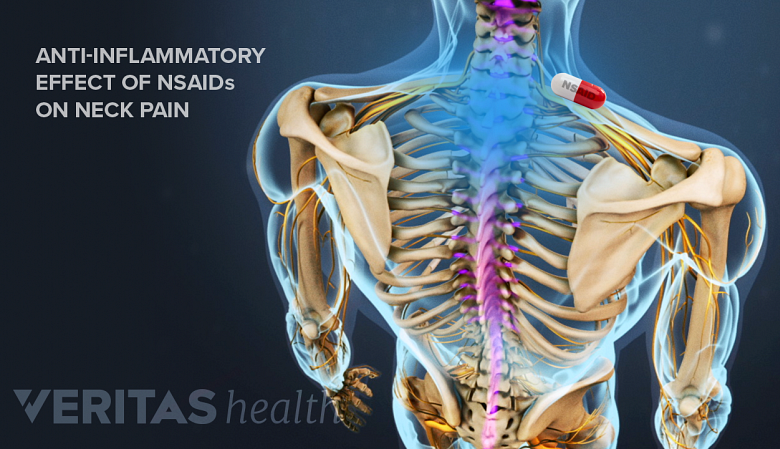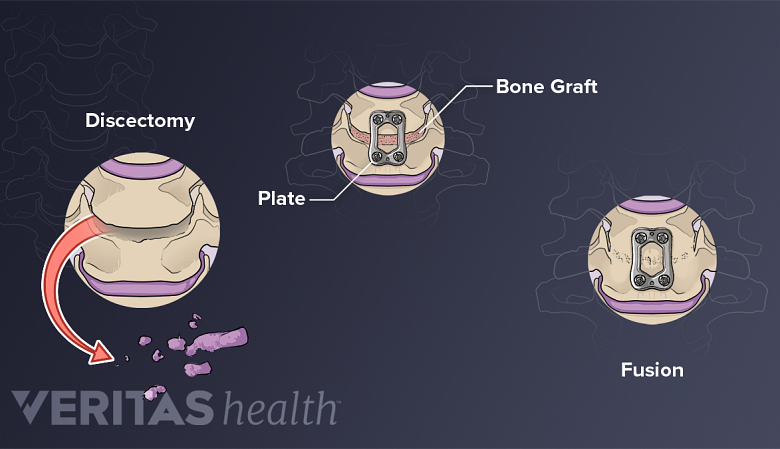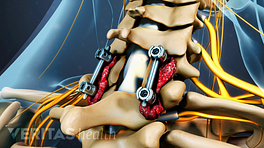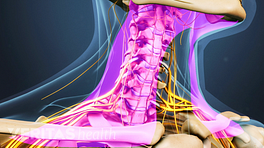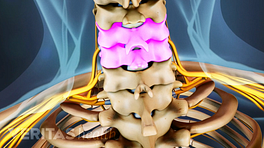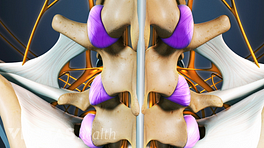Neck pain caused by ankylosing spondylitis can typically be managed with nonsurgical treatments. However, what works best for one person may not work for another. Finding the best treatment option, or combination or treatments, typically takes some trial and error.
In This Article:
- Neck Pain from Ankylosing Spondylitis
- Diagnosis of Neck Pain from Ankylosing Spondylitis
- Treatment of Neck Pain from Ankylosing Spondylitis
- Medications for Neck Pain Caused by Ankylosing Spondylitis
- Ankylosing Spondylitis Video
Nonsurgical Treatments and Self-Care
Some common treatments and self-care tips for ankylosing spondylitis-related neck pain include:
Physical therapy
A physical therapist or other certified medical professional can design a strengthening and stretching program to help keep the back and neck strong, as well as flexible. Almost every treatment plan for ankylosing spondylitis involves finding ways to stay physically active and exercise more.
See Physical Therapy for Neck Pain Relief
Lifestyle changes
Depending on the pain levels and condition of the joints in the spine and elsewhere, strenuous activities may need to be reduced or avoided, such as running or heavy lifting. In addition, healthy eating (avoiding inflammatory foods such as processed or junk foods) as well as not smoking can be beneficial to spine health and pain reduction. 1 Diet’s effect on spondylitis symptoms. Spondylitis Association of America Web site. Accessed September 14, 2017. , 2 Villaverde-Garcia V, Cobo-Ibanez T, Candelas-Rodriguez G, et al. The effect of smoking on clinical and structural damage in patients with axial spondyloarthritis: A systematic literature review. Semin Arthritis Rheum. 2017; 46(5): 569-83.
See Anti-Inflammatory Foods to Try for Neck Pain
Medications
NSAIDs aid in neck pain relief by reducing inflammation.
Nonsteroidal anti-inflammatory drugs (NSAIDs)—such as ibuprofen, naproxen, and COX-2 inhibitors—are the most common medications for reducing inflammation and pain caused by ankylosing spondylitis. If NSAIDs are ineffective, another option could be biologics, such as TNF inhibitors or others. Biologics are unlikely to be the first choice because they are associated with potentially more serious side effects, such as increased risk for infection.
Support groups
Ankylosing spondylitis can be a challenging condition, but regularly meeting with other people who can relate may help ease the stress. Support groups might meet locally or online, and some discussions offer tips for managing the condition.
This is not a complete list of nonsurgical treatments to ease neck pain from ankylosing spondylitis. Numerous other options exist, such as applying ice or heat therapy, manual manipulation, acupuncture, and others.
Surgery for Ankylosing Spondylitis
ACDF surgery aims to fuse two or more adjacent vertebrae together to stabilize the spine.
With modern treatments and medications, ankylosing spondylitis is highly unlikely to progress to the point of needing surgery. 1 Diet’s effect on spondylitis symptoms. Spondylitis Association of America Web site. Accessed September 14, 2017. , 3 National Ankylosing Spondylitis Society Web site. Updated January 12, 2017. Accessed September 14, 2017. However, if ankylosing spondylitis has spread to the neck, it is more likely that surgery could become a serious consideration. If the spinal cord or spinal nerve health is at risk from spinal compression, or if a severe deformity has developed with the head hunched forward, spine surgery may be considered as a last resort.
Some surgical options for ankylosing spondylitis could include:
- Laminectomy. This spinal decompression surgery involves removing the lamina (bony arch) from the back of a vertebra, freeing up more space for the spinal cord and spinal nerves that were compressed.
- Spinal fusion. If there is an instability in the spine, spinal fusion surgery aims to fuse two or more adjacent vertebrae together to stabilize the spine. To set up the fusion, specialized hardware—such as wires, screws, rods, and cages—are used to instrument the vertebral levels involved in the surgery.
- Spinal osteotomy. This surgery involves the restructuring or removal of one or more spinal bones to realign the spine and/or reduce the deformity. This surgery also involves a fusion to stabilize the spine and keep its new shape, using internal instrumentation.
These surgeries could be performed in the cervical, thoracic, and/or lumbar spines. Variations on these surgeries exist, and other surgical methods may also be considered for ankylosing spondylitis in the spine.
- 1 Diet’s effect on spondylitis symptoms. Spondylitis Association of America Web site. Accessed September 14, 2017.
- 2 Villaverde-Garcia V, Cobo-Ibanez T, Candelas-Rodriguez G, et al. The effect of smoking on clinical and structural damage in patients with axial spondyloarthritis: A systematic literature review. Semin Arthritis Rheum. 2017; 46(5): 569-83.
- 3 National Ankylosing Spondylitis Society Web site. Updated January 12, 2017. Accessed September 14, 2017.

